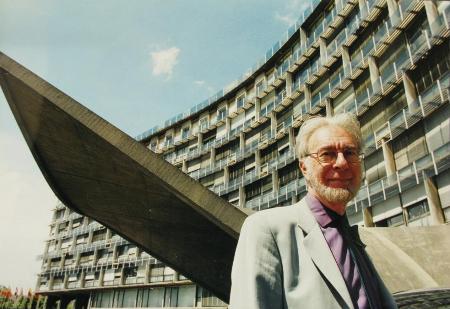Stories
UN Declaration and Programme of Action for a Culture of Peace
Personalities in the "culture of peace bed"
I recognized the failure of the culture of peace programme by the end of 1996, long before others would admit it. I wrote an analysis at that time of the failure of the programme, but did not show it to anyone. No one was ready to hear it, and it was many years before I could fully understand its significance, that the nation-state is incapable of sustaining a culture of peace.
It wasn't enough to recognize the failure of the old programme, but I needed to put in place a new direction that would be more effective. Already I was realizing that the culture of peace would have to move forward without help from the Member States. Therefore, I put my hopes in the development of an Internet news service to link up the initiatives that I had encountered during my many missions around the world. This approach, which came to be called the Culture of Peace News Network, was opposed by the other members of the Unit. It was no secret when I went to Director-General Mayor for a new assignment, and this created more conflict than ever in the bureaucracy (see, for example the UNESCO Inquisition.
By 1997, the UN General Assembly was calling for an International Year for the Culture of Peace, so Mayor put me in charge of it. I was able to draft the Declaration and Programme of Action on a Culture of Peace which was adopted by the UN in 1999 and is arguably the most important UN document since the Declaration of Human Rights. In any case, I consider the most important thing I have ever done in my life.
Together with a new team at UNESCO, including Enzo Fazzino, we organized the mobilization of 75 million signatures on the Manifesto 2000, one of the greatest peace movilizations in UN history. The story of these initiatives is told on my website under the title "Early History of the Culture of Peace." And details are contained in thousands of pages of documents that have been donated to the Wesleyan library, as well as five containers of additional documents in my apartment. We had so much traffic on our internet site for the IYCP that the organization had to add a special server, http://www3.unesco.org/iycp/ to handle it. I think we had more traffic than the rest of the organization put together. UNESCO kept the www3 website up and running until 2017, when they took it down and put most of it (not all) into their available archives. I have reproduced the English language website (but not the French) here.
Lindsay came over to live in Paris in 1995 and found us a wonderful apartment on rue de Champs de Mars, the top floor with views of the Eiffel Tower one way, Montmartre another, and UNESCO Fontenoy, the third. She took art lessons and eventually marketed a wonderful coloring book for the tourist trade. Meanwhile, my personal life had become complicated as I began to see other women in addition to Lindsay who came and went from Paris, especially during my early years at UNESCO.
With the retirement of Mayor at the end of 1999 and the return of American influence with the new Director-General Matsuura, the culture of peace gradually lost its support from UNESCO, and I retired in 2001.
When the U.S. had decided to return to UNESCO, they had supported the candidacy of Matsuura ( behind the scenes) and as part of the deal, they got to choose the new Director of Programming. "Their man", with ties to the right-wing Heritage Foundation, was a former UNDP director named Hans D'Orville. Part of his mission, it turned out, was the "bury" the culture of peace. On the day of my retirement from UNESCO, he literally stood in my door and motioned to his watch to make it clear I had to vacate the office. What he did not know was that for weeks I had been coming in a 6 in the morning and copying 5,000 pages of documentation for the culture of peace, which I was then able to distribute to Federico Mayor, Wesleyan, and Anwarul Chowdhury. I made these copies because otherwise UNESCO, like other agencies of the UN system, does not keep archives of this sort.
 |
Stages
1986-1992
Fall of Soviet Empire
1992-1997
UNESCO Culture of Peace Programme
